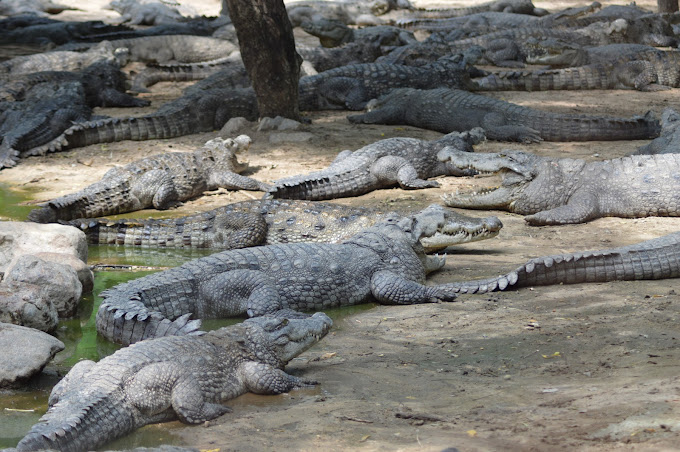Madras Crocodile Bank: Where Conservation Meets Wonder

The Madras Crocodile Bank, nestled in the coastal town of Mahabalipuram near Chennai, Tamil Nadu, stands as a bastion of reptilian conservation and a marvel of biodiversity. Established with the mission to protect and conserve these ancient creatures, the Crocodile Bank has evolved into a prominent wildlife institution, attracting tourists, researchers, and nature enthusiasts from across the globe. In this comprehensive article, we delve into the history, location, and the captivating world of the Madras Crocodile Bank, showcasing its remarkable journey from inception to becoming a prominent tourism hotspot.
The Genesis of Madras Crocodile Bank
The story of the Madras Crocodile Bank dates back to the early 1970s when Romulus Whitaker, a herpetologist and conservationist, envisioned a haven for conserving endangered crocodile species in India. Whitaker’s passion for reptiles and his determination to protect these ancient creatures laid the foundation for what would become one of the world’s leading reptile conservation centers.
Location and Scenic Surroundings
Situated along the scenic East Coast Road (ECR) in Mahabalipuram, the Madras Crocodile Bank enjoys a pristine coastal location that seamlessly blends into the Bay of Bengal. The backdrop of golden beaches and azure waters provides an enchanting setting for visitors and researchers alike.
Conservation Efforts and Species Diversity
The core mission of the Madras Crocodile Bank is the conservation of endangered and vulnerable crocodile species. It serves as a refuge for various crocodilian species, including the critically endangered Gharial and the formidable Saltwater Crocodile. Through breeding programs, habitat restoration, and public awareness campaigns, the Crocodile Bank plays a pivotal role in saving these reptilian marvels from the brink of extinction.
Beyond Crocodiles: Reptilian Diversity
While crocodiles take center stage, the Madras Crocodile Bank is not limited to them alone. The reptilian diversity here is staggering, with a reptile park housing various snake species, monitor lizards, and tortoises. The bank is also involved in the critical task of snake venom extraction for medical research and antivenom production.
Education and Research Initiatives
Education is a cornerstone of the Madras Crocodile Bank’s mission. The institution conducts educational programs and workshops for schools and colleges, fostering an appreciation for wildlife conservation among future generations. Additionally, the bank is involved in herpetological research, contributing valuable insights into reptilian behavior, physiology, and ecology.
The Croc Bank as a Tourism Spot
The Madras Crocodile Bank is not merely a conservation institution but also a thriving tourism destination. Visitors can witness thrilling crocodile feeding sessions, explore an interpretive center showcasing reptilian wonders, and participate in guided tours to learn about the bank’s conservation efforts and reptile behavior.
Challenges and Conservation Triumphs
Despite its achievements, the Madras Crocodile Bank faces several challenges, including habitat loss, human-wildlife conflict, and illegal wildlife trade. However, it has also celebrated numerous successes, including successful breeding programs, habitat restoration efforts, and a growing community of wildlife enthusiasts dedicated to reptile conservation.
Future Goals and Sustainability
The Madras Crocodile Bank continues to evolve, with plans for expansion and the establishment of a research center. Sustainability and collaboration with global conservation organizations are key aspects of its vision for the future. By sharing knowledge and resources, the Crocodile Bank aims to contribute not only to the conservation of reptiles but also to the preservation of biodiversity worldwide.
Conclusion: Where Conservation Meets Wonder
The Madras Crocodile Bank stands as a testament to what passion, dedication, and scientific rigor can achieve in the realm of wildlife conservation. From its humble beginnings to its current status as a renowned conservation institution and tourist attraction, the bank has not only safeguarded reptilian species but has also inspired countless individuals to appreciate and protect the wonders of the natural world.
As we journey through the history, location, and remarkable conservation efforts of the Madras Crocodile Bank, we are reminded that the intersection of conservation and tourism can be a powerful force for positive change. The Crocodile Bank invites us to marvel at the ancient reptilian inhabitants of our planet, and in doing so, it encourages us to join the collective effort to preserve the rich tapestry of life on Earth for generations to come.



